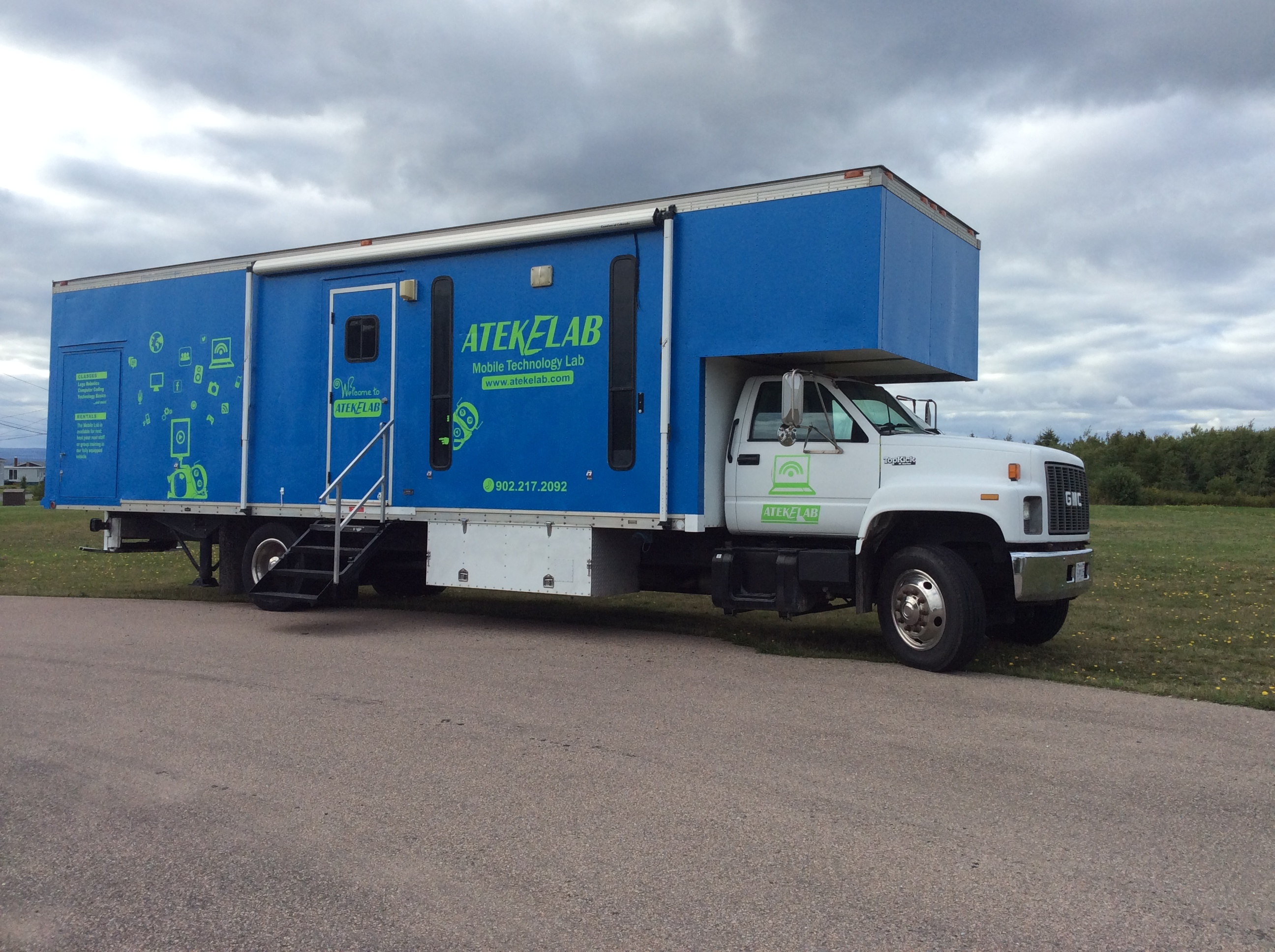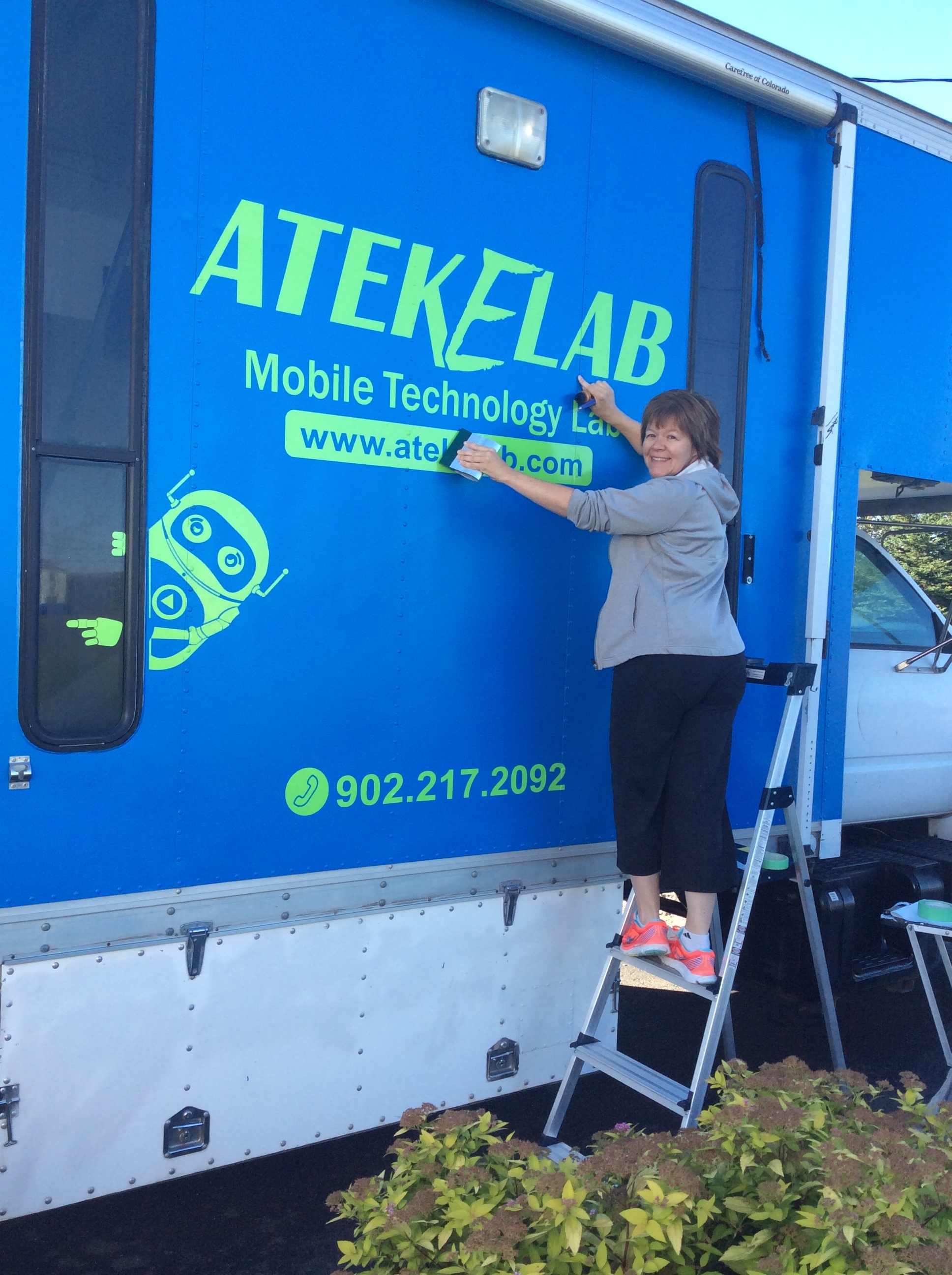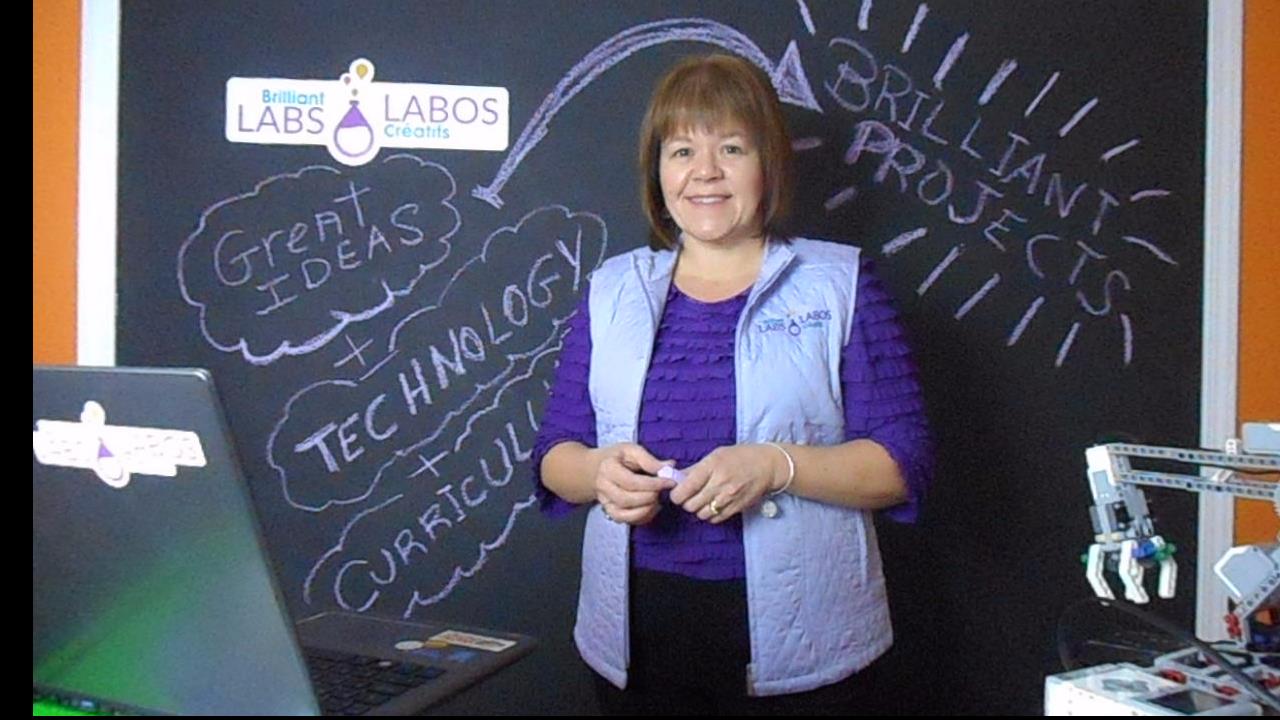Learning and Teaching Creative Computing in Rural Communities
Some midlife crises result in the purchase of a fancy sports car. Kim Desveaux’s prompted her to buy a 35-foot truck and ship it up from the U.S. to her home in Cape Breton, Nova Scotia. She converted the truck into a mobile classroom and set out to bring coding and robotics lessons to children living in spread-out rural communities in Atlantic Canada.


“We’re a former mining and steel community, and we haven’t really transitioned,” Kim said. “We haven’t really admitted that those fossil fuels are done, and we’re still teaching the same old things.”
As she prepared to hit the road, Kim taught herself Scratch, watching tutorials that young students had created for YouTube. She prepared a six-week curriculum, advertised her classes, and gathered a group of students for her first session.
“Within the first hour and a half, they were done,” Kim laughed. “They had done everything that I thought was going to take six weeks. It was a real eye-opener for me. I thought, wow, these kids are just so ready for it, and it’s such a great platform.”
She was surprised with the ease with which students took to Scratch, but she was even more surprised by a conversation she had with fourth grade students while teaching a Scratch lesson in a school during Hour of Code.
“I asked, ‘Who here plays a video game?’ All the kids put their hands up. ‘What do you play?’ Minecraft, Five Nights at Freddy’s, all the various answers. ‘Where do you get video games?’ We download them from the app store. Then I said, ‘How do they get to the app store?’ And there was dead silence.”
After the long silence, one student finally yelled out, “The guy at the video store puts them on there!” Kim was shocked.
“It was a real moment for me,” she said. “I had no idea. It really opened my eyes to how far behind we were, that the kids in the classroom were consuming all the technology – they all had iPads and laptops and gaming devices – but they had no idea that they could be creators.”
She asked the students if they had ever wished the games they played did something different, and they jumped in with answers – they wanted a character to be different, or to have more lives.
“I explained to them that if they read a book and wished the story was different, they had the tools to go home and write a story,” Kim said. “But if they wanted a game to be different, we, as adults, failed to give them the tools.”
After this conversation, she got the students started with a Scratch tutorial, and they dug right in. When the bell rang for recess, not a single student got up. As Kim says, they were hooked.
Unfortunately, while Kim’s efforts were attracting some attention, it wasn’t enough to make a viable business. But that midlife crisis truck did set her on a path where she feels she can make a change: she is now a proud member of the dedicated Brilliant Labs team. Brilliant Labs is a non-profit organization working to bring innovative, technology-based learning to Atlantic Canada. Kim and her colleagues go into schools to create maker spaces and teach coding, robotics, video, claymation, 3D printing, and more. Their focus is on helping teachers get comfortable using these activities and resources in their classrooms, and they help teachers see how they can integrate them into the curriculum.
“There’s a little bit of apprehension from teachers because they wonder if they have to know how to code perfectly in order to teach kids,” Kim explains. “Teachers feel they have to be the keeper of knowledge. So a lot of our messaging is that the teacher doesn’t have to be the leader in the coding sessions. They just have to be the guide. Our goal is to support teachers in realizing that. I tell them there’s no point in trying to learn everything. As fast as you learn, they will be three steps ahead of you.”
Kim suggests using coding buddies – older students who have learned about Scratch and then work with younger students – and sharing among neighbors so that the students can support each other in the learning process. She encourages teachers to let their students explore and experiment, and points out that students often feel empowered when they can take the lead in this way.
In Kim’s experience, once teachers see their students’ excitement and engagement with Scratch, they’re on board – it’s the first step of bringing it into the classroom that poses the biggest barrier. She recommends teachers reach out to mentors in their community for support in overcoming initial hesitations. To that end, she believes the toughest challenge in her work will be meeting the growing demand. Now that people are realizing the transformative power of project-based technology learning, there is a need for more resources to grow the Brilliant Labs movement.
With her MBA in community economic development and her background as a municipal councillor, Kim keeps the big picture in mind even as she works one-on-one with teachers and students. While there is still a lot of work to be done, she’s happy to see that people in her economically challenged region are starting to see that coding and technology could be a way forward.
Starting with the truck and continuing at Brilliant Labs, Kim’s work has been driven by her recognition of a need and her determination to fill it. In the same way, she hopes teaching Scratch will give students a sense of how to turn their thoughts and wishes into something concrete.

“This isn’t just about making a game or learning a bit of code,” she concluded. “This is about getting the confidence to realize you can imagine something and then build it."


I want to start the same teaching in my country Rwanda after I complete my current studies in Japan.
Kim Desveaux can be my role model.